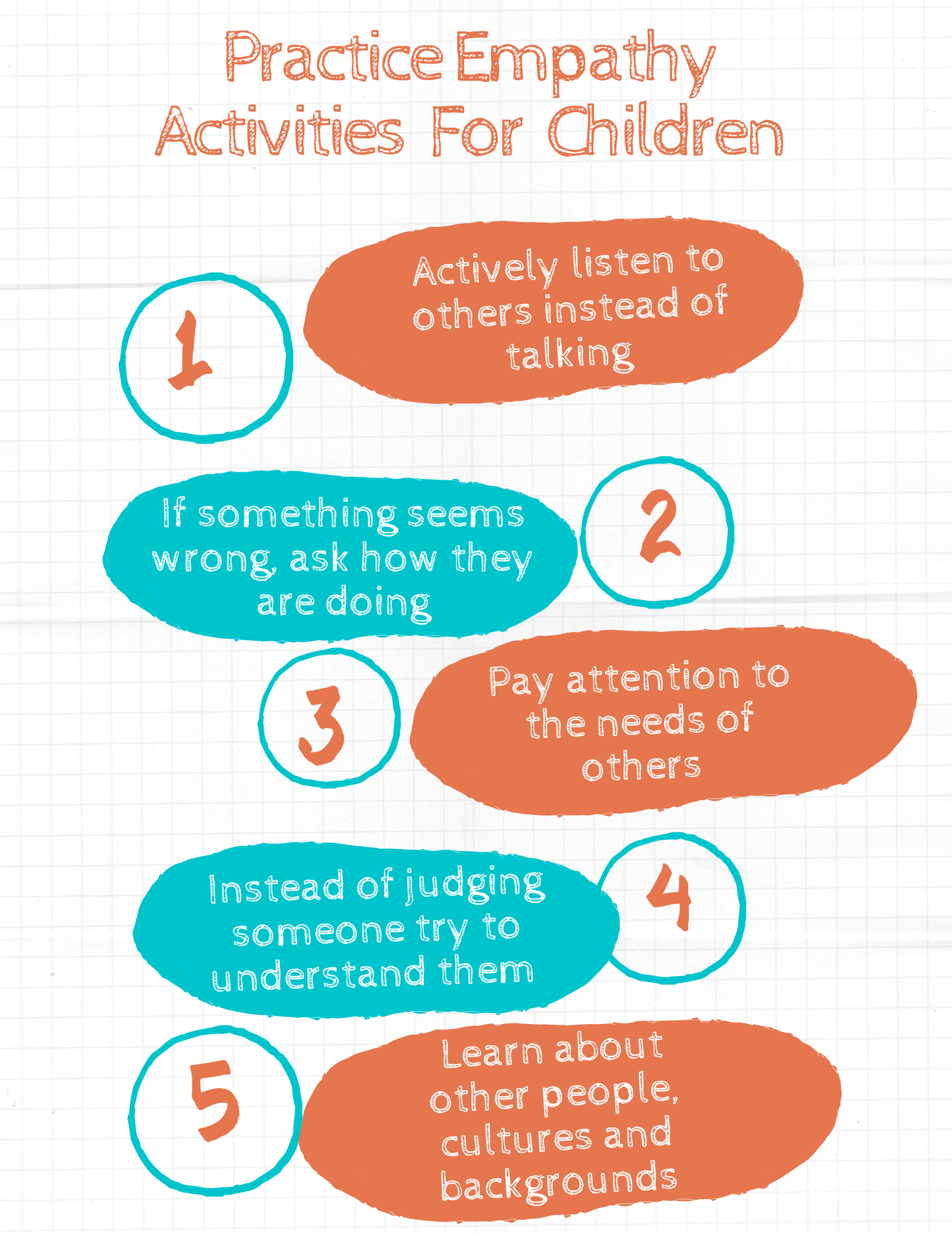I love this poem entitled “Empathy” by Morgan Harper Nichols. When Nichol’s writes, “your soles are worn, your strength is torn under the weight of a story I have never lived before” she is finding common ground between herself and another person. She recognizes the pain in another because she has also felt similar pain and offers support as she “holds the door” for that person.
Empathy is the ability to truly be present. It is the ability to hold a safe space for others to feel their own emotions completely and to be able to understand their experience. Feeling understood is not only a basic human need but it is also how we connect, help, and support one another. If we can’t recognize someone in pain, how can we support them? If we are unable to accept and empathize with our own emotions, it is difficult to be present to people around us. And for this reason, empathy is crucial for our ability to connect.
Teaching empathy? That might sound strange if you think of empathy as an innate, fixed trait -- a talent that some people are born with, and others lack.
But empathy isn't an all or nothing proposition. It isn't something that unfolds automatically, in every situation. It isn't even a single ability or skill. So empathy isn't something you either have or lack, and it isn't something that develops automatically, without input from the environment. Personal experience matters. Culture matters. Parenting matters.
Here are 5 ways to cultivate empathy in your child -- tips inspired by scientific research.
First, let’s start with examples of what empathy looks like.
Talk to your kids about their emotions.
Talking to your children about their emotions will help your child to make associations of what type of emotions others are feeling, as well as to speculate reasons they may be feeling that way.
To take it a step further, try to explain the definitions of different emotions. By helping them to be able to express these emotions in words, you will help them to develop more empathy.
Make different emotion faces and have children guess what you might be feeling.
Throughout the day, help children learn to label their own emotions (e.g., it looks like you are feeling mad that we can't go outside; what can we do to help you feel better?)
While reading stories to children, have children guess how the characters in the story are feeling. Ask questions like “How can you tell that the character is feeling that way? Can you make a face that shows that feeling?”
2. Watch TV and Movies Together
When watching a show together point out the different character’s emotions and feelings in situations and talk about the behaviors behind the feelings and how you know when someone is sad, mad, happy, embarrassed etc. based on their actions.
If your child is younger, you can make comments during the show, such as “Oh wow, that little girl looks really sad. I wonder if it’s because her friend had to go home? What do you think?”
This will help engage your child into the emotions of the different characters, instead of just the events going on, on screen.
With older children, you can discuss the emotions after the show when you discuss the story as a whole. perhaps point out examples when your child may have felt those emotions as well, and what others did, or could have done, to contribute or help in a given situation.
3. Volunteer to help others in need.
Another great way to help your child develop more empathy, is to help those less fortunate. You can volunteer at a local soup kitchen, find things around the house to donate, or volunteer at a local animal shelter. Teaching children how to care for animals is a great way to teach them empathy because caring for others has been shown to improve self-esteem, understand the value of life, increases compassion, and helps children understand that they have the power to make others feel good. This is a great time to have a conversation on why it’s important to care about others.Try to keep the conversations open, and discuss how not everyone lives the same, and that some people have a lot of struggles to deal with.
4. Be an Example
The best way to teach your children to be empathetic, is to be a role model. Let your children see you show empathy for other’s around you and of course show empathy to your children. Show your kids that it is OK to cry and to be sad when there is a tragedy. Try not to hide these feelings. Children need to know that it’s normal to have feelings. They need to know not to hide or deny their feelings. So if something sad happens, and you want to cry, feel free to do so, and then explain to your child why. On the flip side when you are feeling happy or inspired share those feelings with you kiddos as well!
5. Model respect for those who seem different.
Children are naturally fascinated by those who are different. If a child is curious about someone with a disability, don't just shush them. Make friends with the person and allow your child to see that this person is more similar to him or her than different. Often, the person will explain his disability to your child, if your child is prompted to ask respectful questions.
These are just a few tips to ensure that you can help your child reach her innate potential to be empathic and kind. However, there is no substitute for acting empathic yourself, and allowing your child to observe you. Your child will learn the most from watching you interact with others in a kind, empathic way! If you are interested in some further resources, I have included 10 children’s books that teach empathy below.
Namaste- Cassy



